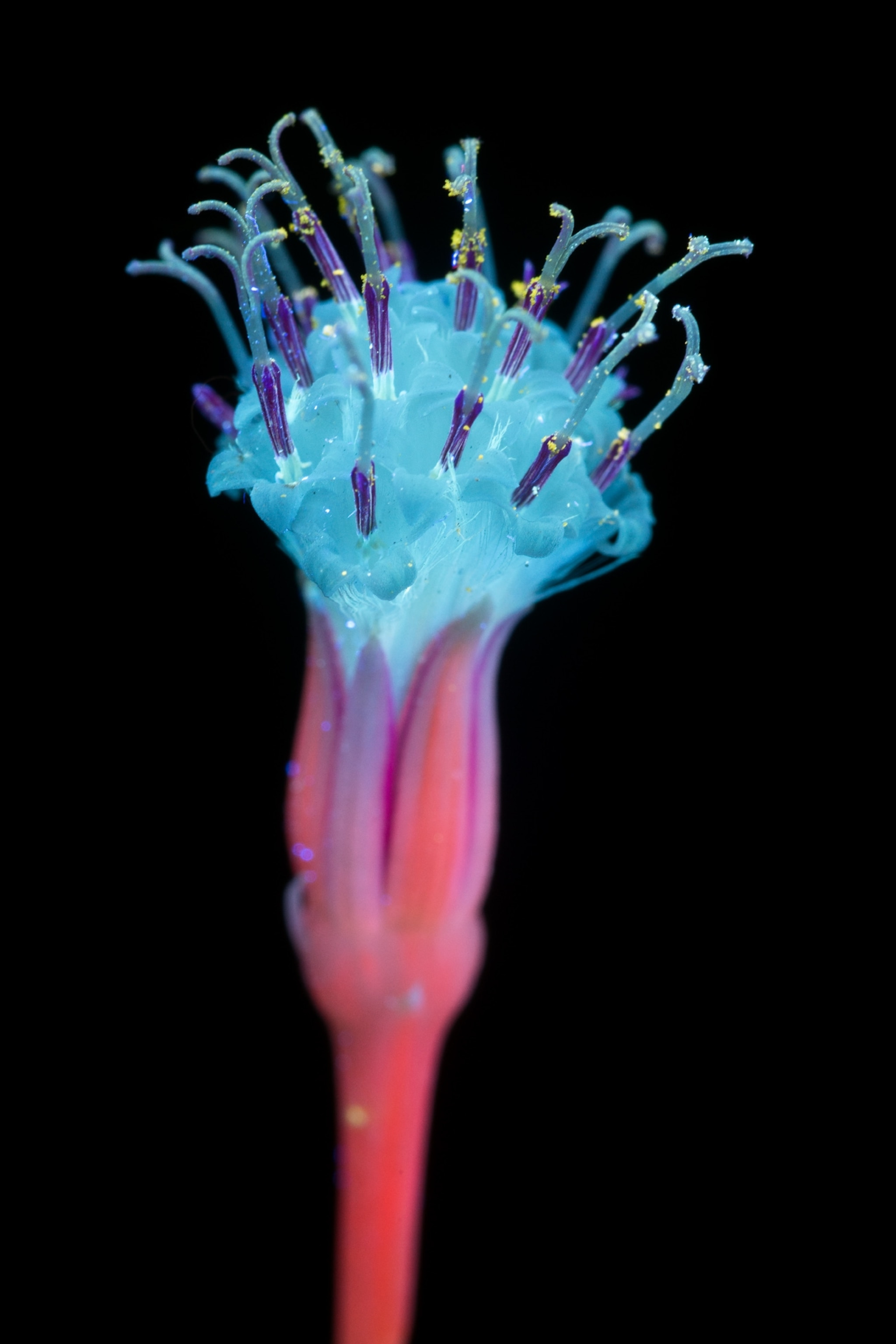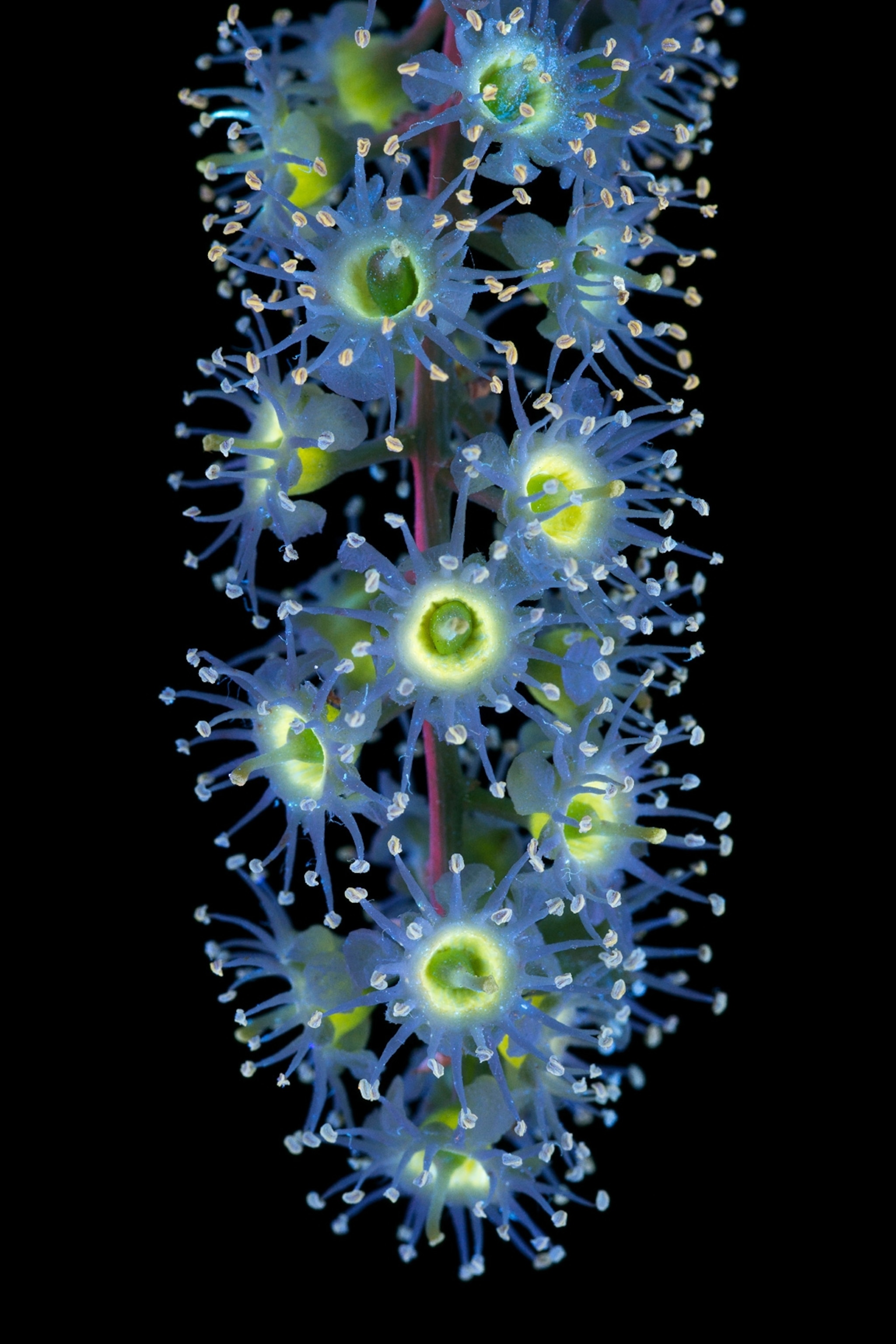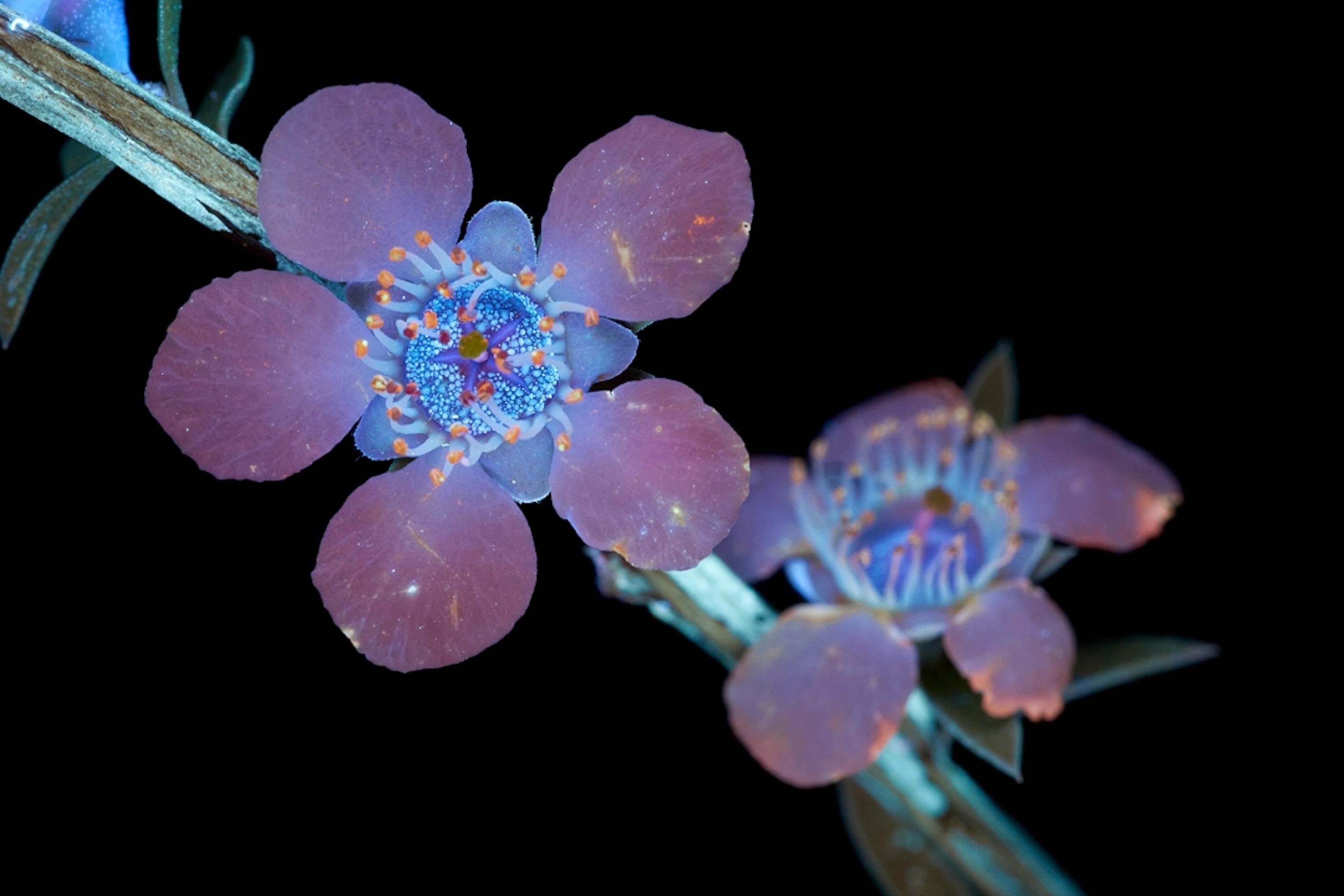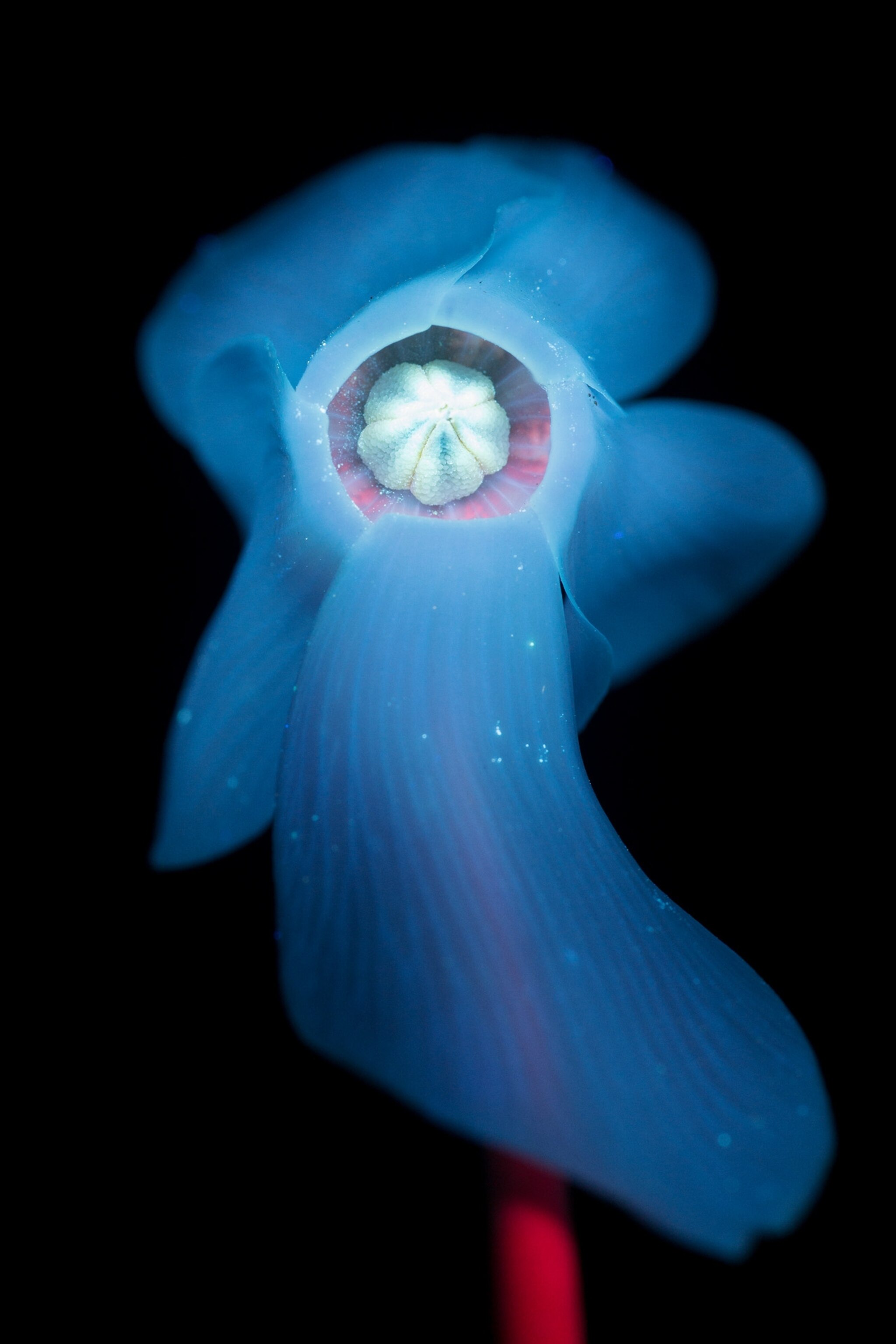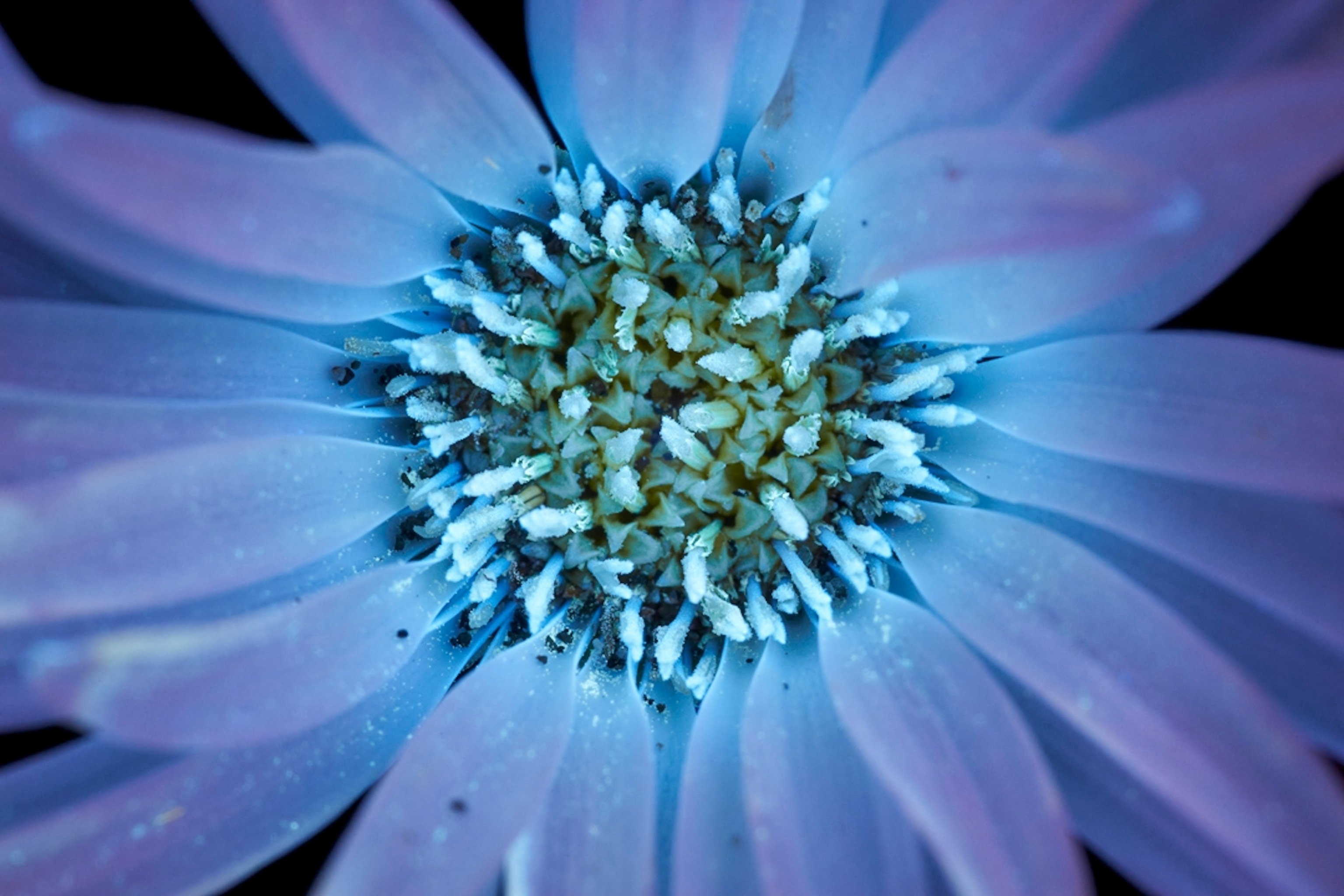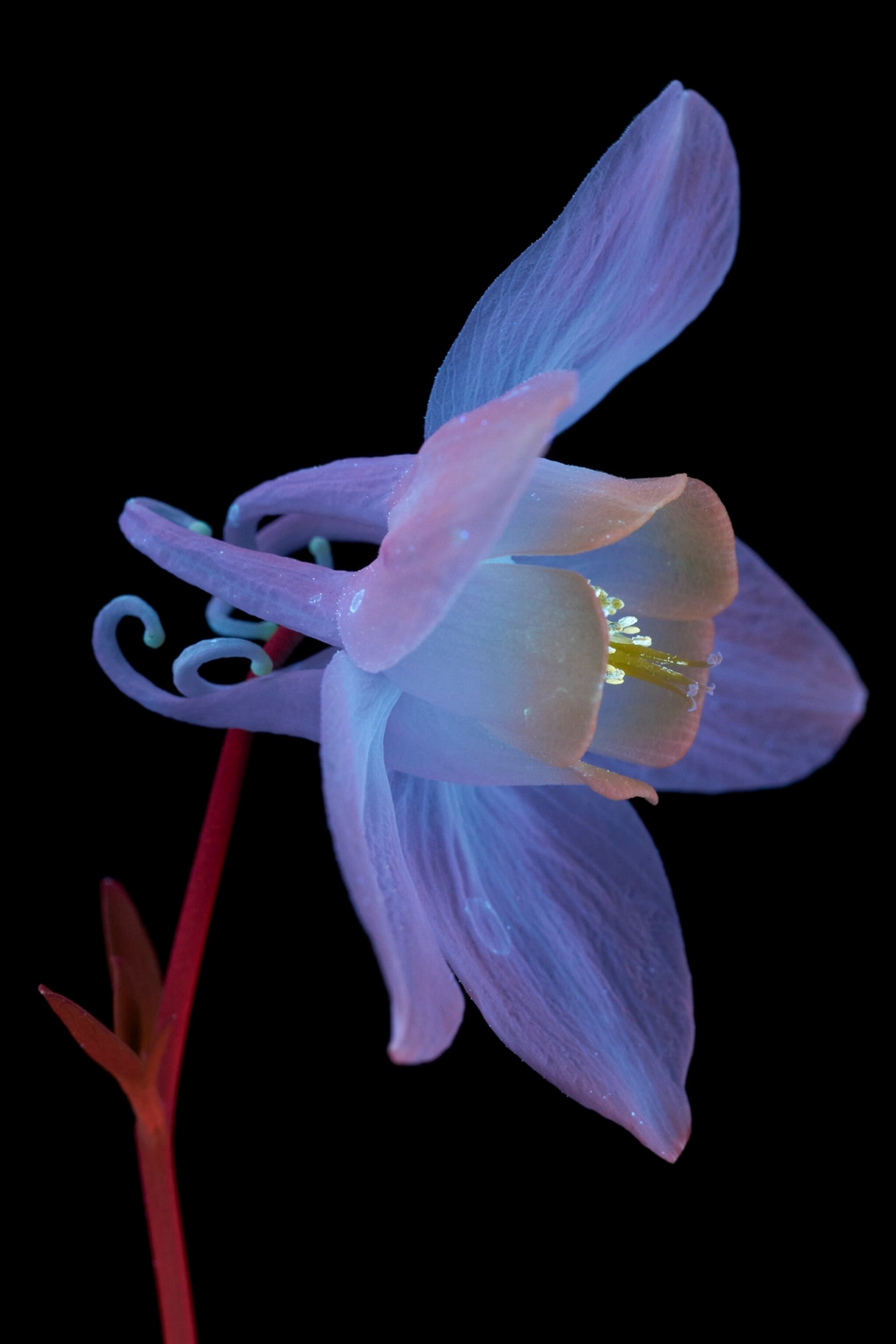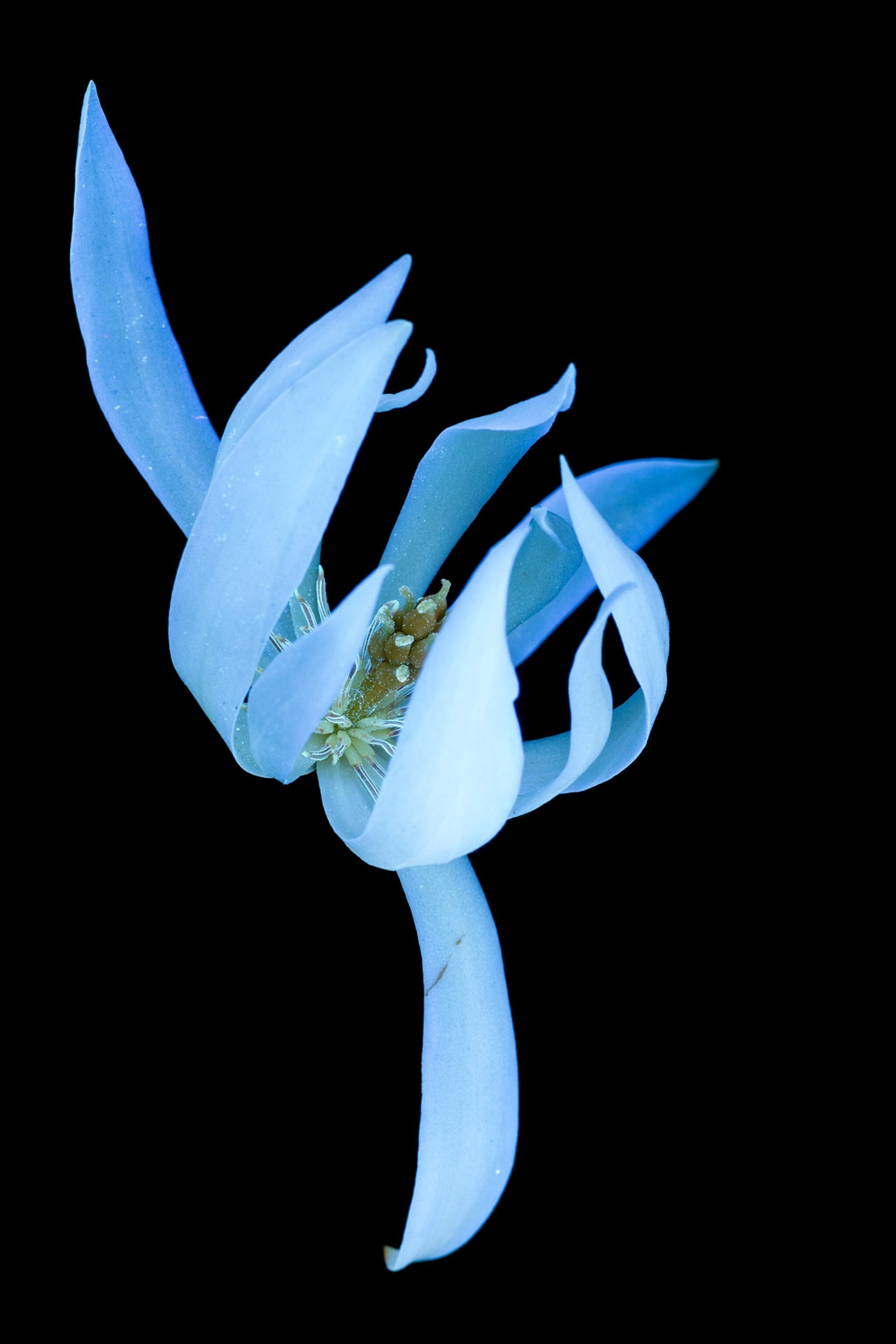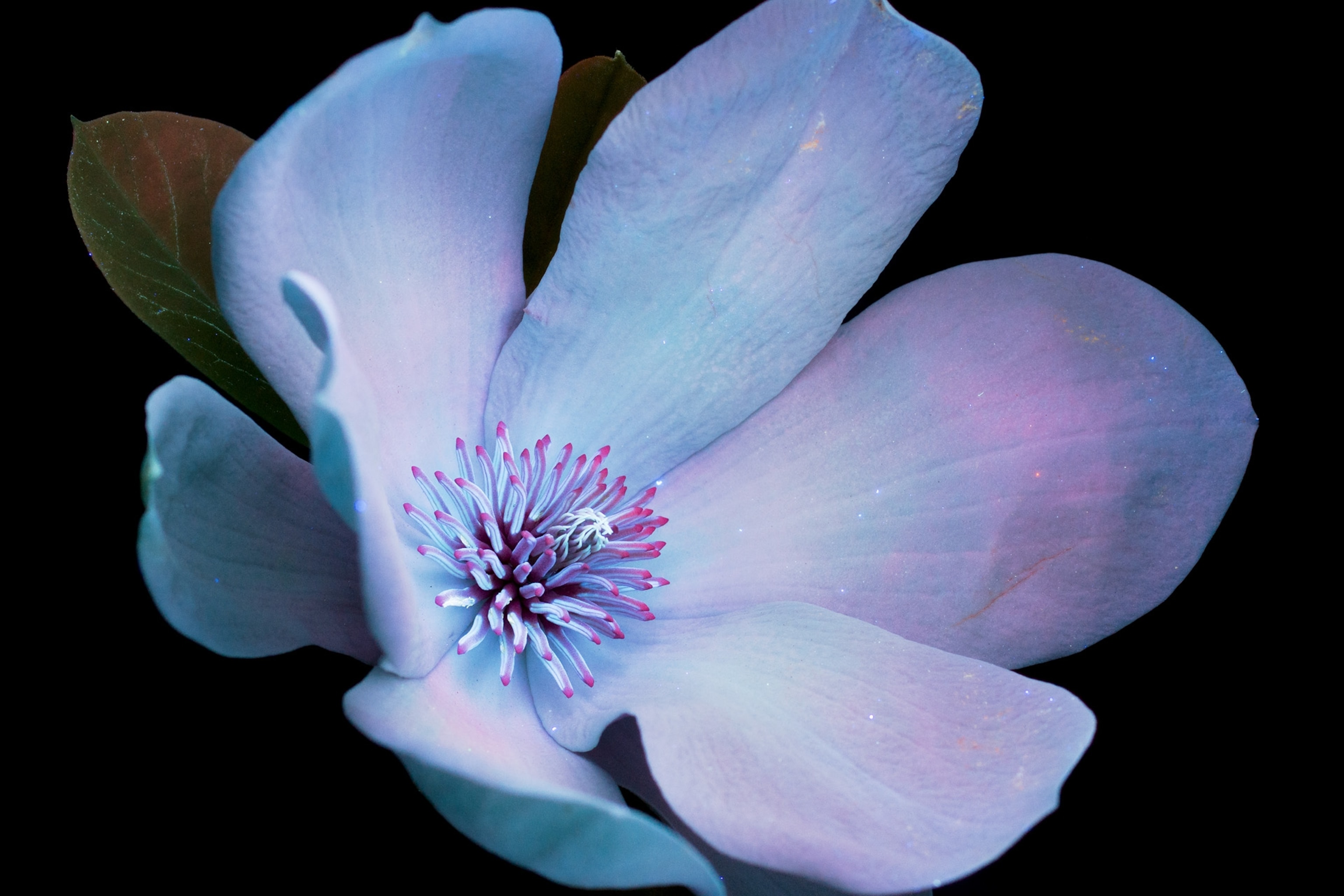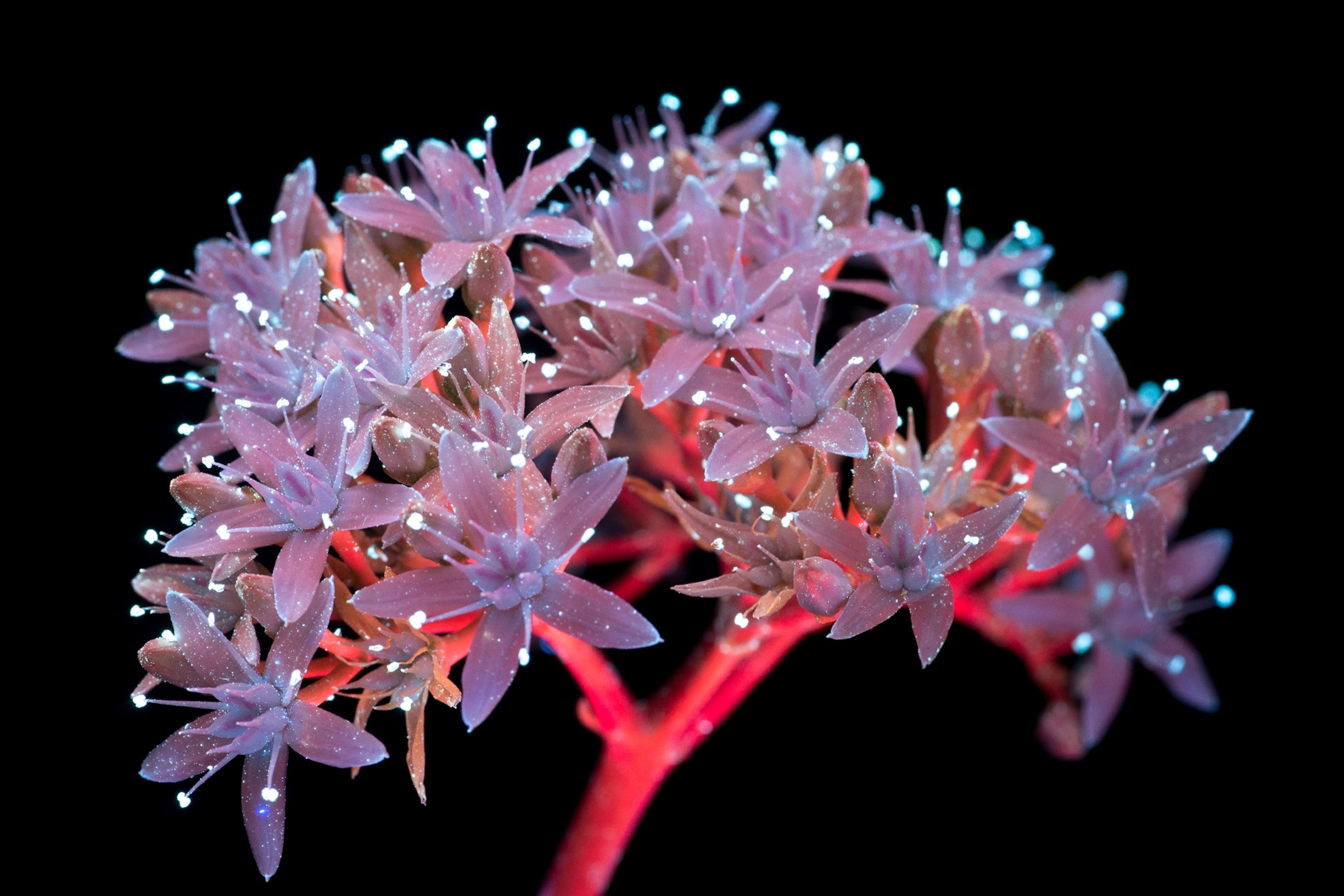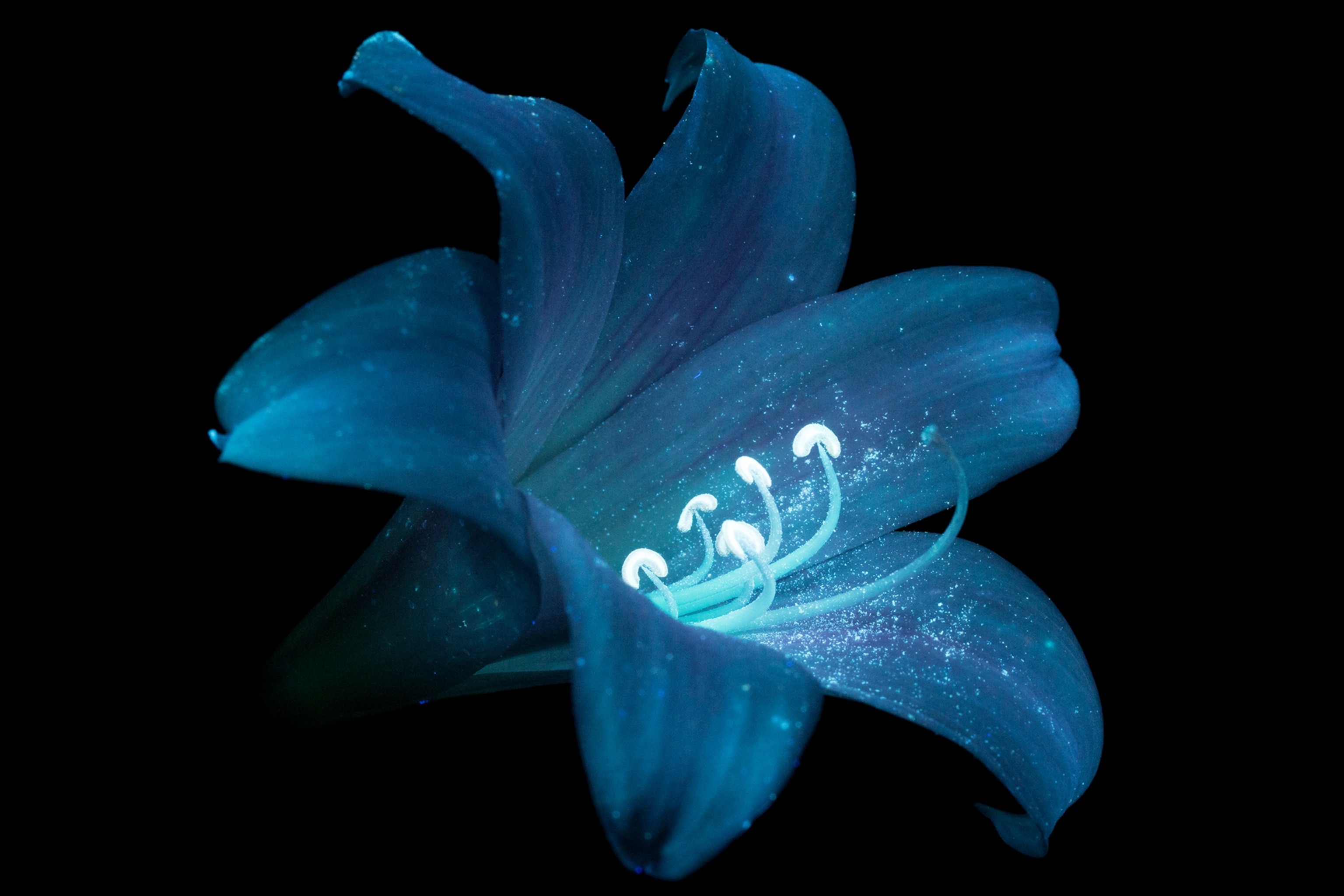Illuminating nature's spectrum
Discover hidden beauty with UV photography.
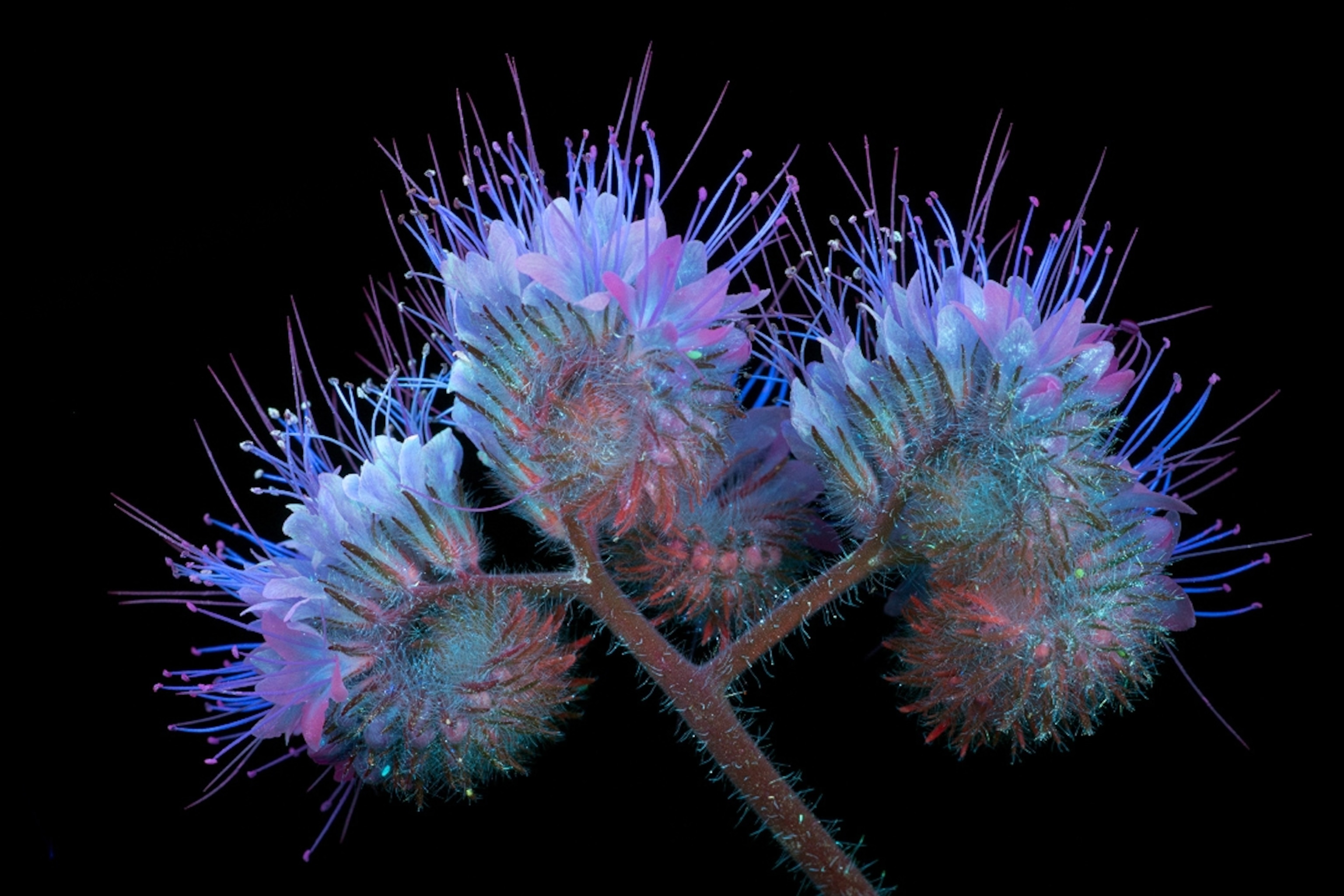
Photographs byCraig P. Burrows
March 20, 2024
In the natural world, certain species emit visible light when exposed to ultraviolet light. Although ultraviolet-induced visible fluorescence, or UVIVF, occurs regularly in nature, it often goes unnoticed because of the overpowering intensity of sunlight. Flowers have hidden patterns, akin to maps, that guide specific pollinators directly to their pollen and nectar with reflected ultraviolet and UVIVF cues. Photographer Craig Burrows devised a system to capture this intriguing phenomenon in images.
